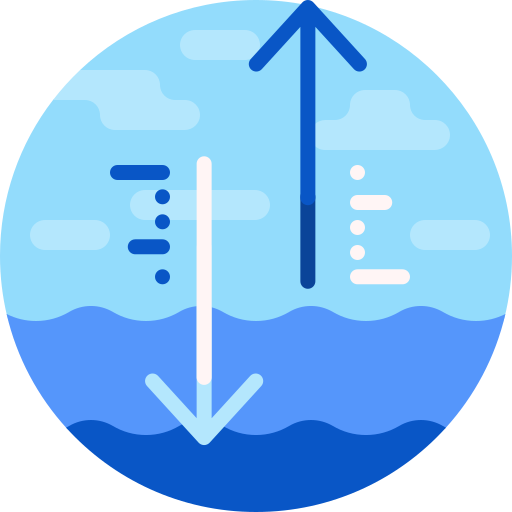ABOUT C.F.E.W.S.
WHAT IS CFEWS?
The CFEWS Project was design to reduce the impact of flooding on communities throughout Trinidad and Tobago. It aims to achieve this by providing communities and first responders with information on the treat of a flood in a timely manner allow them respond in to save lives, safeguard properties and livelihoods. The project focuses on building the country’s capacity to monitor, detect and disseminate flood information whilst building the capacity of first responders and communities to interpret this information and respond in a systematic matter. Under this project, communities will be taught to access and assess flood alerts, develop and execute community response plans, improve community flood preparedness, conduct rapid damage assessments and provide pertinent information to first responders to improve timeliness and effectiveness of relief and restoration efforts.
Some notable investments include: installation of flood monitoring gauges (rainfall, streamflow and staff gauges) in areas vulnerable to the threat of flooding, Communication infrastructure and tools to facilitate the timely dissemination of data and provide flood alerts and community-based training programme.
With the investments of the European Commission Humanitarian Aid (ECHO) through the United Nations Development Programme (UNDP), under the Strengthening of the CFEWS for Trinidad and Tobago , the project has expanded to include focus on the Interagency Coordinating Mechanism, further Expansion of the Flood monitoring gauges, Gender studies, Development of Website for the public to have access to flood information ( this include Realtime river levels within Communities) the website can also be used to submit flood reports.
Project partners have invested in infrastructure to monitor, detect and disseminate flood information and build the capacity of first responders and communities to interpret this information and respond in a systematic matter. Specific activities include the installation of flood monitoring gauges to improve the ability to detect floods in all regional corporations, development of a notification portal and use of SMS messaging to disseminate data and flood Alerts, development a Community Hydrological Observers Training and other training programmes to empower communities to respond, development of CFEWS app with rapid damage Assessment form to collect critical flood data by members of the communities.

Technician installing an antenna at Cumberland Hill to communicate with CFEWS stations in north Trinidad.
HOW DID CFEWS BEGIN?
Flooding is a major cause for concern in Trinidad and Tobago. At least one catchment is affected by floods every year causing damage to properties and the disruption of life and livelihoods. The government of Trinidad and Tobago as a result spends millions of dollars on flood relief, restoration and mitigation initiatives annually. In October 2018, floods affected 150,000 people from 4,100 households and 75% of farmers experienced loss of crops and livestock (IFRC, 2018). This event also compromised the accessibility of the nations’ major arteries leaving many members of the travelling public stranded. With the looming threat of climate change and climate variability coupled with prevailing anthropogenic factors, it is anticipated that incidences of flooding due to extreme hydrological events will occur more frequently. Trinidad and Tobago has an effective National Early Warning System that issues alerts on the inclement weather; however, there was need for a community-based early warning system that would alert individual communities to the threat of localized flooding and empower them to respond in a manner that would provide for the protection lives and properties. This realization fostered a partnership between the Water Resources Agency (WRA) WASA, Ministry of Rural Development and Local Government and the Trinidad and Tobago Red Cross Society to develop a Community Based Flood Early Warning System for Trinidad and Tobago. Other Project Partners include The Office of Disaster Preparedness and Management ( ODPM) Ministry of Nation Security, Drainage Division Ministry of Works and Transport and Trinidad and Tobago Meteorological Services Division. The project was designed to build the capacity of communities to access and assess flood alerts, develop and execute community response plans, improve community flood preparedness, conduct rapid damage assessments and provide pertinent information to first responders to improve timeliness and effectiveness of relief and restoration efforts.
Through the efforts of the ODPM, the Project was able to secure funding from the European Commission Humanitarian Aid (ECHO) and executed by the United Nations Development Programme (UNDP) for a “ strengthening of the CFEWS for Trinidad and Tobago.
The specific objective is to strengthen community and national capacities for generating impact-based flood early warnings and effectively planning and executing anticipatory actions. To achieve this, the project will target four Output areas that aim to:
OBJECTIVE 1
Enhance capacities for detecting, monitoring, analysis and forecasting of flood hazards in fifteen communities – three in Tobago and twelve in Trinidad.
OBJECTIVE 2
Expand the flood early warning information communication/ dissemination platform to reach more communities, municipalities and governmental agencies.
OBJECTIVE 3
Enhance capabilities for the coordination and management of floods at the community and national levels.
OBJECTIVE 4
Improved emergency response capacities in a crisis.
WHERE DID CFEWS BEGIN
The Project began with the installation of Streamflow gauges in the following communities, Arouca, Caparo, North Oropouche, South Oropouche, Caroni Bamboo, Manuel Congo.
The Strengthening of the CFEWS facilitated the installation of gauges on the Crooks and Bacolet Rivers in Tobago the Couva, Cunupia, Papourie, Diego Martin and Maraval.
The strengthening of the CFEWs also allowed for the expansion of the project to Tobago
HOW LARGE IS CFEWS?
The Project covers both Trinidad and Tobago. The Main focus is on communities that are vulnerable to the impacts of Floods.

